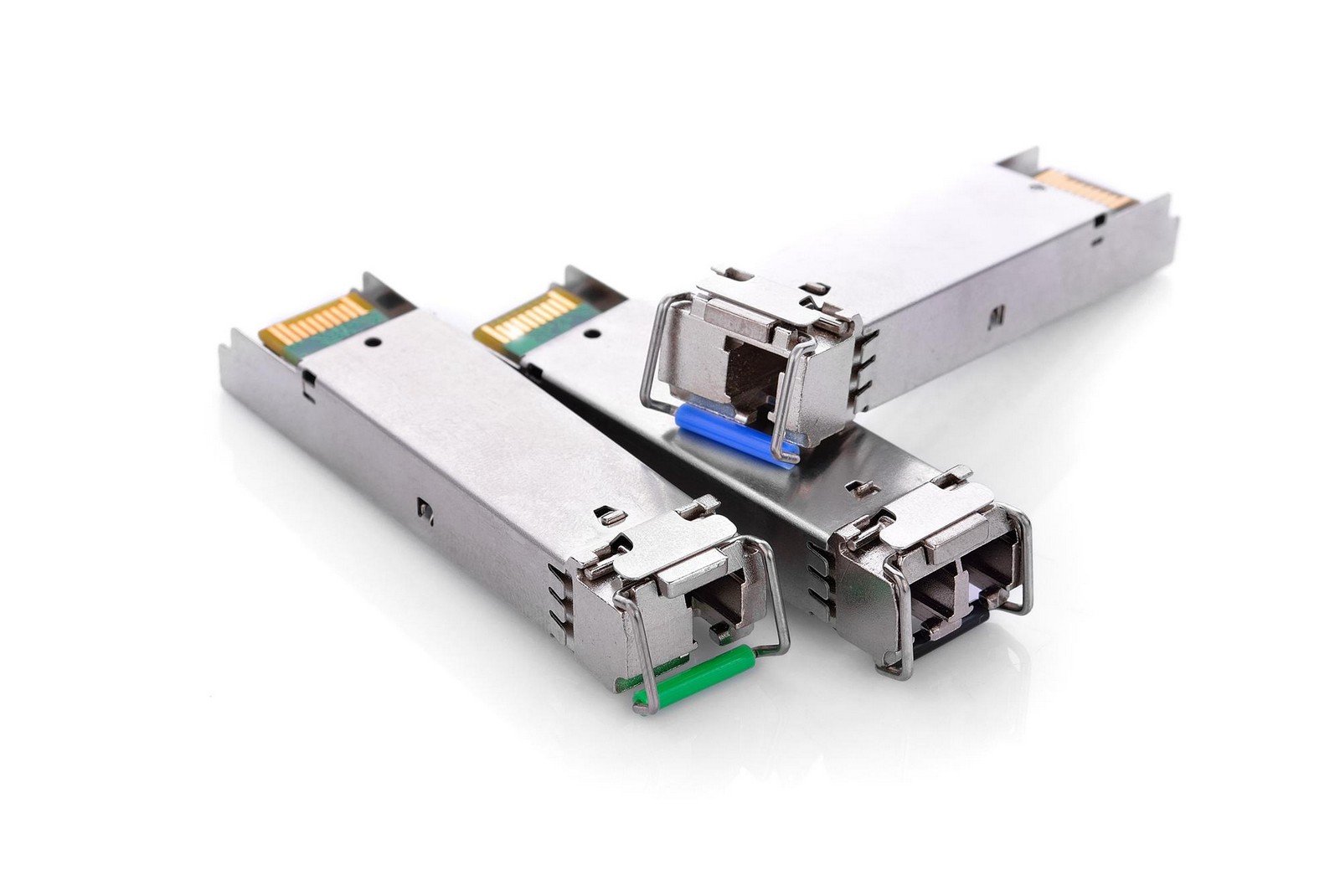SFP Transceivers

Quick Navigation:
- SFP Transceivers Definition
- SFP Transceivers Explained Easy
- SFP Transceivers Origin
- SFP Transceivers Etymology
- SFP Transceivers Usage Trends
- SFP Transceivers Usage
- SFP Transceivers Examples in Context
- SFP Transceivers FAQ
- SFP Transceivers Related Words
SFP Transceivers Definition
SFP Transceivers are compact, hot-swappable input/output devices used in networking to connect a variety of optical and copper cables to switches and routers. The term “SFP” stands for Small Form-factor Pluggable, and these transceivers are key to modern telecommunications and data centers, supporting speeds from 1 Gbps to 100 Gbps or more. They enable flexibility in configuring and upgrading networks without replacing entire systems. SFP modules come in variants like SX, LX, and EX, optimized for different transmission distances and media.
SFP Transceivers Explained Easy
Think of SFP transceivers like Lego pieces for internet cables. They plug into a device, and you can pick the piece you need depending on the cable and speed you want. If you need faster internet or a longer cable, you just swap the piece out—no need to buy a new toy.
SFP Transceivers Origin
SFP transceivers emerged as an evolution from the earlier GBIC (Gigabit Interface Converter) modules. With the rise in data transmission demands in the early 2000s, SFPs offered a smaller, more versatile solution.
SFP Transceivers Etymology
Derived from "Small Form-factor Pluggable," emphasizing their compact size and the ability to plug into network equipment.
SFP Transceivers Usage Trends
The use of SFP transceivers has grown rapidly with the expansion of cloud computing, data centers, and 5G networks. They are integral to ensuring high-speed, flexible, and cost-efficient network connectivity. Their versatility has made them a staple in enterprise IT and telecommunications sectors.
SFP Transceivers Usage
- Formal/Technical Tagging:
- Networking
- Data Centers
- Telecommunications
- Optical Fiber - Typical Collocations:
- "SFP transceiver module"
- "multi-mode SFP"
- "fiber optic SFP"
- "hot-swappable SFP"
SFP Transceivers Examples in Context
- Data centers use SFP transceivers to connect servers with high-speed fiber optic cables.
- A telecommunications company deploys SFP transceivers for long-distance transmission in 5G networks.
- Office IT setups use SFP modules to link routers and switches across multiple floors with minimal effort.
SFP Transceivers FAQ
- What is an SFP transceiver?
An SFP transceiver is a module that connects network devices like switches or routers to fiber or copper cables. - What does “hot-swappable” mean for SFPs?
It means the module can be removed or replaced without turning off the device it’s connected to. - What are the types of SFP transceivers?
Common types include SFP, SFP+, and QSFP, with varying speeds and capabilities. - How do SFPs differ from GBICs?
SFPs are smaller and offer better performance than the older GBIC modules. - What cables work with SFPs?
SFPs support both optical (single-mode and multi-mode fiber) and copper cables. - What is the range of an SFP module?
The range varies from 500m to 120km, depending on the module type. - Are SFP transceivers standardized?
Yes, most follow the MSA (Multi-Source Agreement) for compatibility. - Can I use SFPs from different brands together?
Yes, if they adhere to MSA standards, but some devices may have vendor lock-in. - How do I know which SFP module to use?
Check the device specifications and the required transmission distance and speed. - What is the lifespan of an SFP transceiver?
Typically, they last 5-10 years, depending on usage and environmental factors.
SFP Transceivers Related Words
- Categories/Topics:
- Fiber Optics
- Data Transmission
- Telecommunications
- Networking Equipment
Did you know?
The adoption of SFP transceivers significantly reduced electronic waste in networking. Their modularity allows network upgrades and repairs without discarding large equipment, aligning with green IT practices.
PicDictionary.com is an online dictionary in pictures. If you have questions or suggestions, please reach out to us on WhatsApp or Twitter.Authors | Arjun Vishnu | @ArjunAndVishnu

I am Vishnu. I like AI, Linux, Single Board Computers, and Cloud Computing. I create the web & video content, and I also write for popular websites.
My younger brother, Arjun handles image & video editing. Together, we run a YouTube Channel that's focused on reviewing gadgets and explaining technology.



Comments powered by CComment